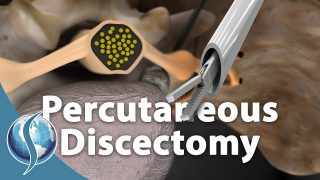What is Radiculopathy?
Often times, physicians use a lot of terms freely with patients, assuming the patients know what the word means. Radiculopathy is one of those terms. In the most simplest terms, it does mean a pinched nerve in the spine. It is important to know that radiculopathy really means pinching of the nerves as the nerve leaves the spinal sac. The medical community calls these individual nerves nerve roots. Because of the close proximity of the nerve root to the spinal sac, often the cause of radiculopathy is a crowding, or compression on the nerve by structures closely located to the spinal column.
Those structures are often bones, vertebral discs, ligaments, and fat tissue. And, as we will discuss, each of these can cause pressure, or compression on the nerves causing this pinched nerve radiculopathy.
But first, we must define the function of these nerves as they come off the spinal sac. For my patients, I explain that each nerve is like an electrical wire that goes from one part of the body to act as the electric signal to another part of the body. With these nerve “wires”, a signal from the brain, through the spinal cord, to the nerve will go to a specific part of the body, and control muscles, and sensation. As physicians, we know the typical pattern of responsibility of each nerve root. to give an example, the L4 nerve root is associated with quadriceps muscle strength, the knee reflex, and sensation to the media or inside of the calf. Through feedback to the brain from these nerves “wires”, the brain can adjust the rate of use of each muscle or body part. Part of the feedback includes pain, so the body can avoid situations that can harm the body. If you think about it, it is an amazing coordination of information, and fine control of may moving parts, that allow us to do something as simple as walking. The nerves that come off the spine sac, go out the bone holes in the spine called the foramen. The nerves usually assemble into bundles that travel a certain distance together in the arms, and legs. These large nerve bundles form the so called brachial plexus in the arms, and eventually split off into the 4 main nerves call the axillary, radial, medial and ulnar nerves. Likewise, in the legs, the nerve bundles are the femoral nerve and the sciatic nerve. As you may guess, these large nerve bundles are composed of several individual nerves that exist the spinal sac. To give the example, the sciatic nerve is usually composed of the nerve roots from L3 to S3. This is a very simplistic way to look at the nerve anatomy, but it will then help you understand radiculopathy.
When one of the nerve roots are irritated, it can cause a corresponding irritation to many of the functions associated with the larger nerve bundle . Also, since the individual nerve root is irritated in radiculopathy, any additional stress on the large nerve bundle such as pulling of the nerve bundle , will cause an increase irritation of the individual nerve root. To give an example, if a L4 nerve is irritated, and you then pull on the sciatic nerve by raising your leg (the Straight leg raise test), it will cause more pain to the l4 nerve root, and cause a pain down the leg in the distribution of the L4 nerve sensation pattern.
As stated above, the structures closest to the spinal sac, and nerve roots are usually the cause of radiculopathy. Disk herniations, and protrusions can cause irritation of the nerve roots. As the disk material pushes outside it normal confines, it will cause pressure on the nerve roots potentially causing nerve irritation. Interestingly, while some people are very sensitive to this irritation, some people have nerves that can accommodate this pressure without any significant effects.
As we age the ligament encasing the spinal sac, the so called Ligamentum Flavum often will hypertrophy, or thicken. In that process, it can also be a source of pressure on the nerve roots.
As the facet joints of the back of the spine wear out due to age, often times they enlarge, forming the so called bone spurs that potentially entrap the nerve roots as they exit the spinal canal through the foramen.
Though not common, some patients have hypertrophy of the fat in the epidural space, causing Epidural Lipomatosis which can also lead to nerve irritation.
Sometimes, due to arthritis in the facet joints, a fluid sac forms outside of the facet joint, causing pressure on the nerve roots. These fluid sacs are called Synovial Cysts.
Lastly, we are very dependent on the patients history, in order to determine if the source of radiculopathy is secondary to Vertebral Fractures, Spinal Infections or Spinal Tumors. Luckily, these are rare causes of radiculopathy, but a vigilant physician will also consider these possibilities during the discussion with the patient.
Most radiculopathy causes can be treated without surgery. But, if the symptoms persist, or progress, surgery may become an option for some patients.
Last modified: January 5, 2018









